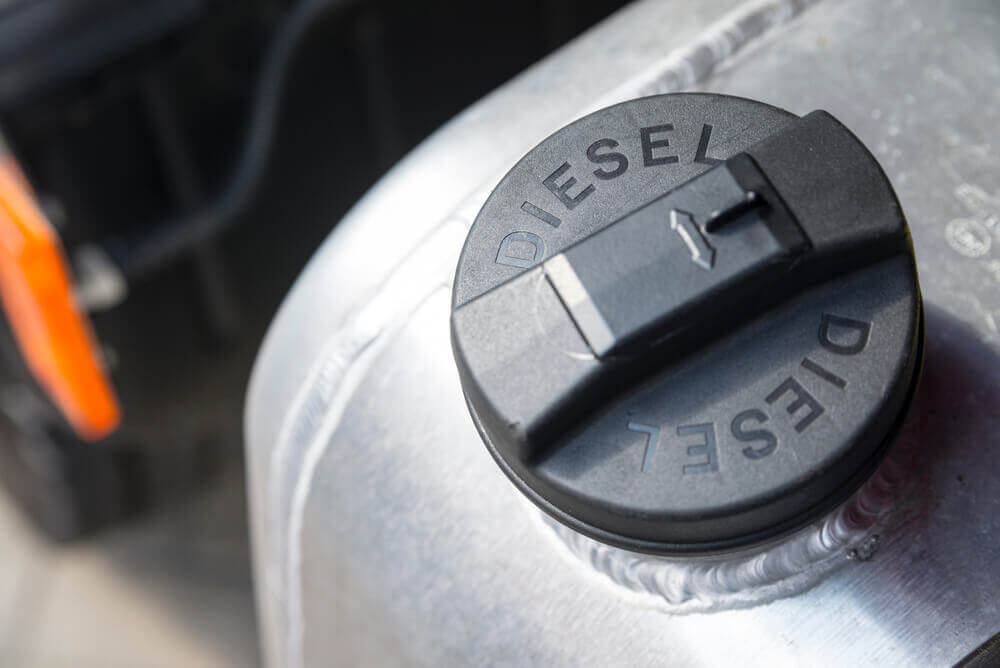
Even though the average price for gasoline has dropped below $4.00 a gallon nationwide, diesel prices now average above $5.00 a gallon across the country.
The Energy Information Administration (EIA) reported that distillate inventories are at their lowest levels since 2008. Supply hasn’t been this low in October since the EIA began reporting on this data in 1982, with a recently reported 25 days left of diesel supply.
Why the U.S. Has a Diesel Shortage
Refinery capacity typically drops at this time of year, as refineries perform maintenance in the spring and fall when the demand is lower and the weather is optimal. Over the past few years, the refinery capacity has dropped further as several unprofitable refineries closed.
But above all, the most significant impact comes from the cutoff of Russian imports. Before Russia’s invasion of Ukraine, the U.S. imported almost 700,000 barrels per day of petroleum and petroleum products. The loss of these imports has caused refineries to struggle to fill the holes in their product slates.
Tips for Combating the Diesel Shortage
While some diesel imports are on the way from Europe to the East Coast, the distillate isn’t likely to return to normal before next summer. And with the industry already facing driver, supply and mechanic shortages, there’s little wiggle room when it comes to shelling out extra money for skyrocketing diesel prices.
With this in mind, we’ve gathered tips fleet managers can leverage to ensure their truck drivers are conserving fuel while out on the road.
Provide Fuel Management Training
Fuel is an expensive resource, and by using it efficiently companies can save thousands of dollars each year. Every mile that a truck moves down the road, fuel is used, but the amount of fuel used can be limited by following some basic rules.
Thanks to comprehensive driver training programs, drivers can be assigned fuel management courses that cover how to:
- Reduce idling
- Manage fuel consumption
- Manage the sweet spot and progressive shifting
- Use momentum and cruise control
- Use alternative fuels and fuel-saving devices
Explore Our Driver Training Courses for Fuel Management
Leverage Your Telematics Data
By maximizing the value of telematics data, companies can save quite a bit when it comes to fuel costs. Tracking driver behavior identifies areas of waste – such as long periods of engine idling, harsh braking or rapid accelerating – all of which help further reduce fuel costs. Fleet managers can also analyze telematics data to ensure drivers are leveraging the most efficient routing.
Enroll Your Drivers in Ongoing Safety Training
According to a study of its own fleet of 12,000 truck drivers, a top-eight North American trucking company found a positive correlation between safety and MPG. A test group of this company’s drivers improved their MPG by 2.8% with a training focus on aggressive driving and fuel management.
When it comes to improving MPG and safety, fleet managers can train drivers in a number of skills:
Space Management emphasizes having enough cushion so that a driver isn’t tailgating and slamming on the brakes all the time, wasting fuel.
Road Rage teaches a driver about what causes road rage and how to handle these situations safely, avoiding unnecessary speeding and braking out of anger.
Defensive Driving teaches drivers how to anticipate dangerous situations to minimize risk and avoid crashes, despite adverse conditions or the mistakes of others while operating a motor vehicle. These standard practices work hand in hand with improving fuel economy when it comes to driver speeds, routes, hard braking, acceleration and more.
Check Out Our Online Defensive Driving Course Catalog
Send Out Frequent Messages & Reminders
An effective way to ensure drivers are mindful of their fuel consumption is by sending out frequent tips and safety reminders. Documented driver training forms the foundation, but a wise manager will reinforce training with:
- Safety messages: delivered via email, text and verbally during driver briefings.
- Visual reminders: such as displaying decals on doors or safety posters in breakrooms.
Providing daily or weekly reminders for fleet drivers helps ensure that they keep fuel consumption management top of mind before hitting the road.
Implement Driver Training to Improve Fleet Fuel Efficiency
Driver training works to protect your drivers, fleet, brand and bottom line, giving fleet managers the confidence and tools needed to proactively mitigate risk. It also reduces speed, hard braking and other driving behaviors that contribute to fuel usage.
Interested in implementing a new driver training program for your fleet? Download our helpful checklist below and discover the fundamentals of defensive driving.




